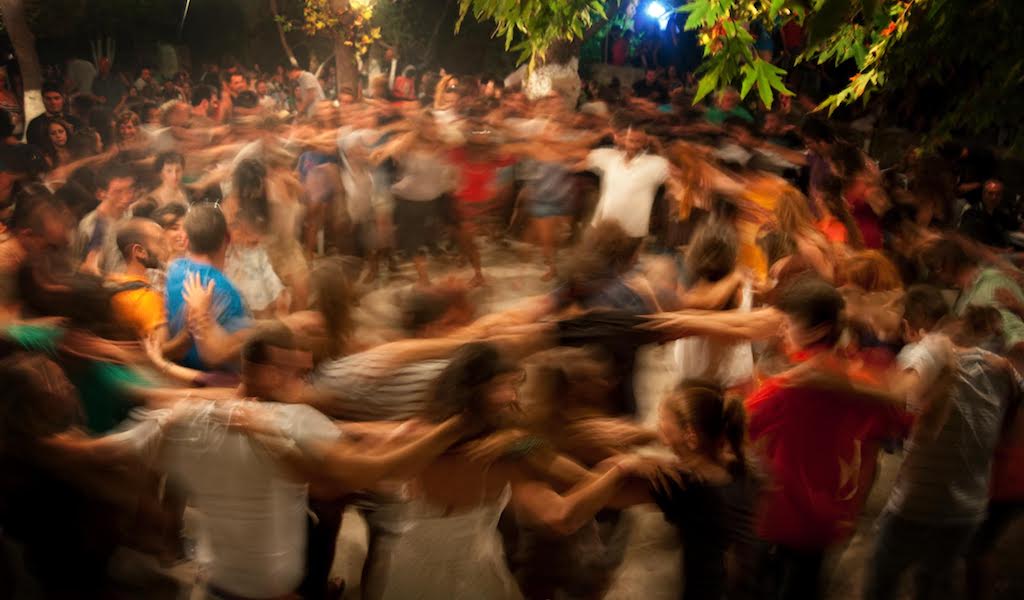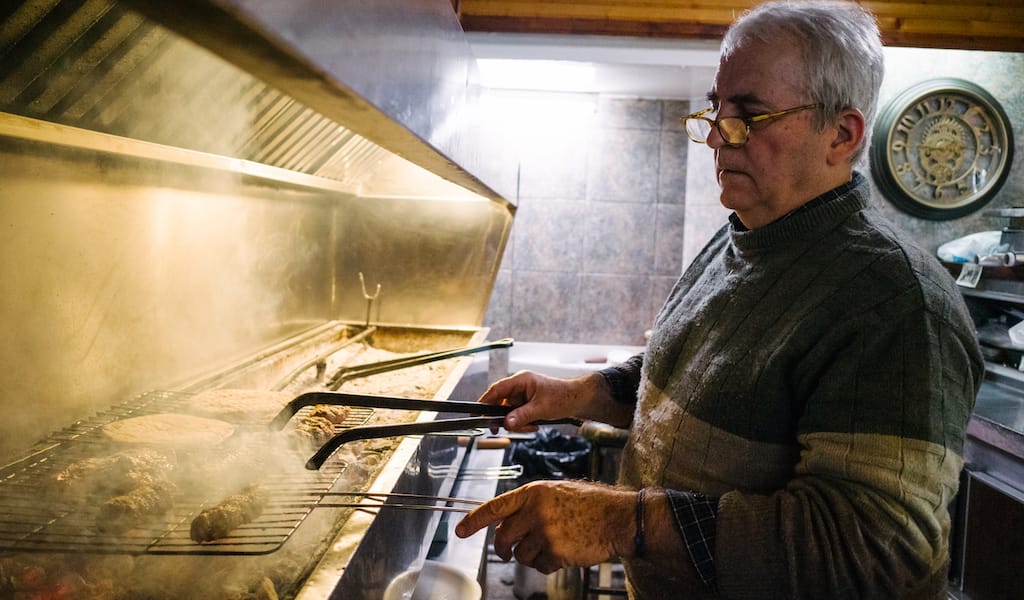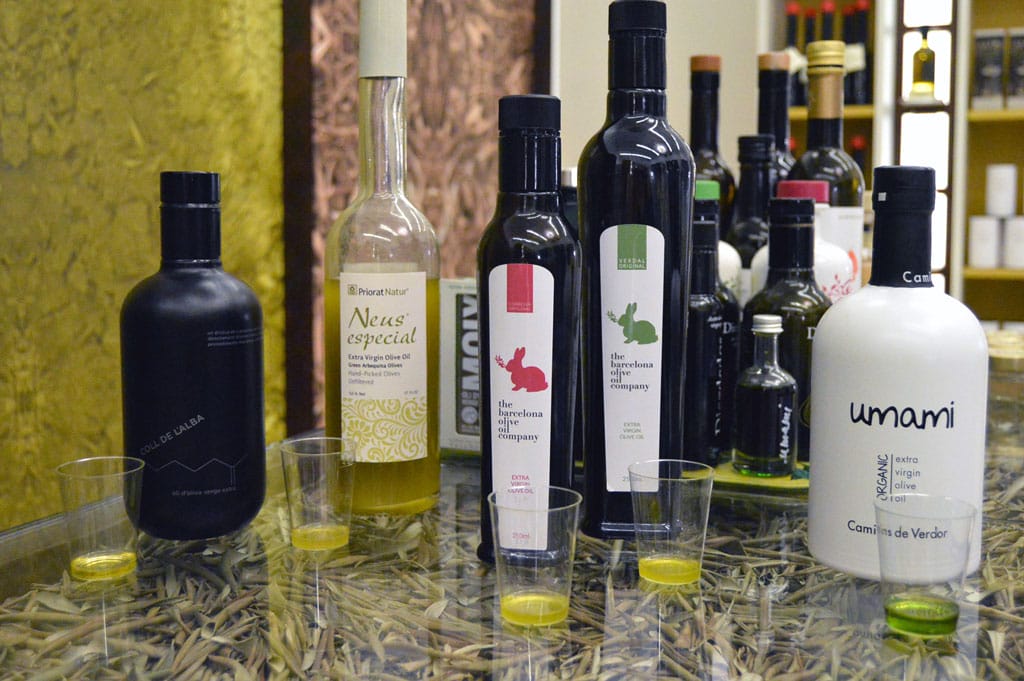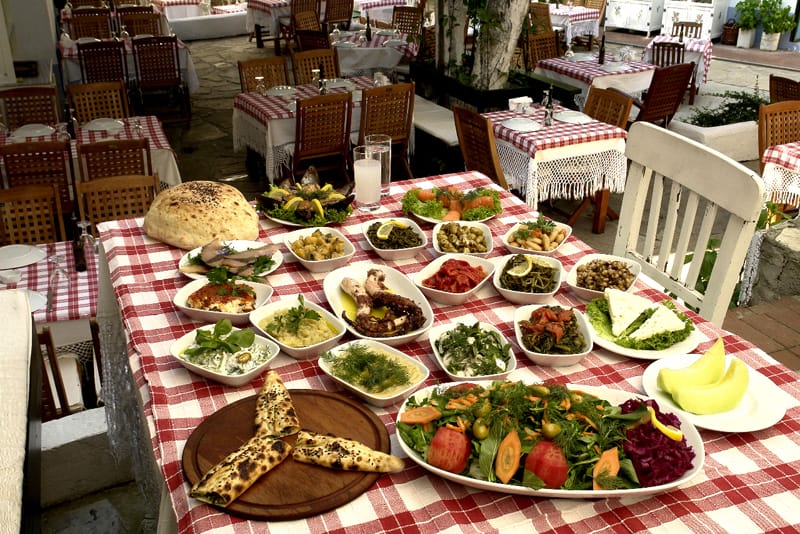The warm months in Greece have special meaning for most villages, particularly on the islands, as they herald the legendary panegyria. Organized by locals, these communal festivals are usually held outdoors, often in the village’s central square. They provide an opportunity for people of all ages, from young children up to elderly folks, to feast, drink and dance until the early morning hours – it’s a chance for the whole family to let loose.
Considering that this tradition involves entertainment, food, booze and dancing, it’s no surprise that its observance is centuries old. The word panegyri (πανηγύρι) derives from the ancient Greek word panegyris (πανήγυρις, pan = all + agiris = meeting), whose use has been documented as early as the 7th century BC. At first it referred to the meeting of all people to celebrate a god; later on, during the Christian years, these meetings evolved into celebrations of a patron saint of an area.
Nowadays, panegyria (the plural of panegyri) are still mainly associated with a patron saint or a particular Christian celebration, but they are also organized to celebrate the harvesting of a local product. For instance, June sees an artichoke festival on the island of Tinos and an oregano festival in Arcadia, on the Peloponnese. In July there’s the potato festival on the island of Naxos, and August brings a sardine festival on the island of Lesvos and a lentil festival on the island of Lefkada.
People often refer to panegyria as Greek rave parties.
At panegyria of this sort – and there are many – food is the clear focus, and participants can taste and often buy delicacies containing the product being feted. As one would expect, the festivals that celebrate the making of a local wine or other alcoholic beverage are particularly popular. Who doesn’t want to celebrate the making of local wine in Alexandroupoli or kazania, the process of distilling grapes into raki, in Crete, where you’re guaranteed a tipple?
The most important element of a panegyri, whether religious or culinary in nature, is the live music, which keeps people dancing until morning. The island of Ikaria (best known for the longevity of its residents) is undoubtedly among the most famous for these celebrations because of the circular fast-paced dancing that takes place there. Together the music and the dancing can send celebrants into a trance state – there’s a reason people often refer to them as Greek rave parties.
When a panegyri is associated with a saint, a mass is held first, followed by a religious procession, with the image of the saint being paraded around the village and finally ending where the panegyri will be held. Usually the feast won’t start before 8:30 p.m., and people who wish to attend sometimes pay a small fee, which includes food and wine. However, many times the food is provided for free by the locals or the church.
As far as what type of food is served, it really depends on the region or even the village. But it is guaranteed to be delicious and plentiful (as is the alcohol). Meat is most often the main feature (although on a few islands, like Lesvos and Amorgos, seafood is the star), whether it’s a goat, lamb or pig roast, a local meat stew or just simple souvlaki (grilled pork or chicken chunks on a stick) Bread, salad, cheese, sausages, savory pies, legumes and local specialties are generally served on the side.
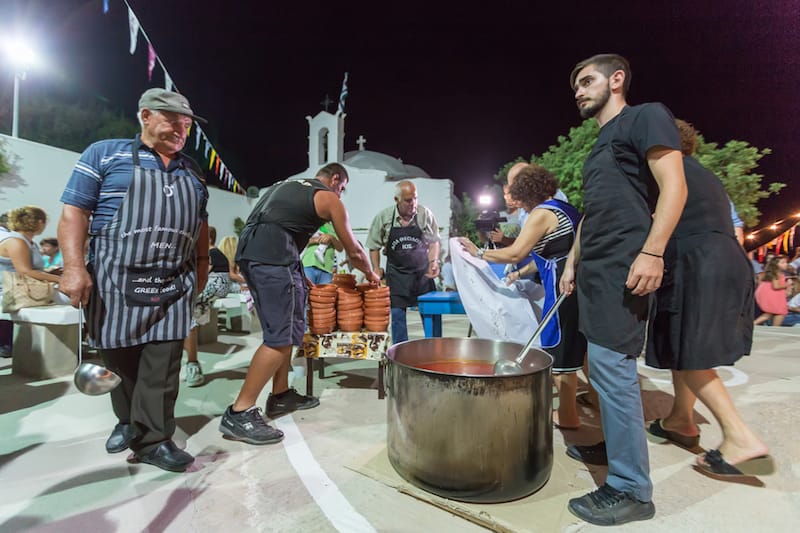
These festivals can last for up to three days, like the panegyri on the island of Serifos in August where participants dance till they drop. The island of Astypalea also hosts a three-day celebration in mid-August that features a number of interesting folk traditions and communal games. On the first day, there’s an evening mass followed by a party. On the second day, the women of the village cook lambriano (roasted lamb stuffed with rice and liver) in the church’s courtyard, along with other local delicacies such as small fried pies and yiaprakia (stuffed grape-leaf rolls). On the third and final day, there are swimming competitions and a variety of folk games known as koukania. These include yiaourtotaisma, a game where blindfolded participants feed yogurt to each other, and petinos, where participants try to retrieve a toy rooster in a basket tied to the end of a greased wooden beam extending over the sea – needless to say, most of them end up in the water.
The most legendary panegyria are held nationwide on August 15, when Greeks celebrate the Assumption of the Virgin Mary. Known as summer Easter, this celebration is as important in the Greek tradition as Easter or Christmas. Each year, over 20,000 festivals take place in different villages around Greece on this date. The most famous ones are held on the Greek islands of Lesvos, Ikaria, Amorgos, Karpathos and Paros.
While we can always get behind a celebration with good food and drink, what makes panegyria so special is the community effort that goes into organizing them and the easy camaraderie that they build – often at these events we’ve found ourselves hugging and bonding with people who were strangers mere hours earlier. It’s Greek culture and hospitality at its finest.
 February 11, 2020 Kissos
February 11, 2020 Kissos
This is a story that starts and ends with the land. First there was the father, Spyros […] Posted in Athens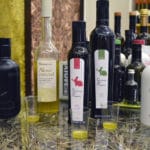 October 19, 2020 Building Blocks
October 19, 2020 Building Blocks
Spain, Italy, Greece, Turkey, Portugal, Morocco, Tunisia – one thing that unites this […] Posted in Barcelona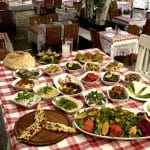 August 31, 2012 Sultanahmet Dining Secrets
August 31, 2012 Sultanahmet Dining Secrets
Editor’s note: We regret to report that Vonalı Celal and Ahırkapı Balıkçısı are […] Posted in Istanbul
Published on September 07, 2017
Related stories
February 11, 2020
AthensThis is a story that starts and ends with the land. First there was the father, Spyros Vracha, a farmer who owned fields nearby Chalandri, now a middle-class suburb around 8 km north of downtown Athens. His crops supplied the kitchens of the tavernas in the area, which until the 1980s was dotted with villas,…
October 19, 2020
BarcelonaSpain, Italy, Greece, Turkey, Portugal, Morocco, Tunisia – one thing that unites this swathe of the Mediterranean is olive oil, whose use in the Fertile Crescent can be traced back to 6000 B.C.E. Olives arrived in the southern part of the Iberian Peninsula around 9th century B.C.E. with the Phoenicians. Ancient Rome saw huge quantities…
August 31, 2012
IstanbulEditor’s note: We regret to report that Vonalı Celal and Ahırkapı Balıkçısı are closed. Call it the Sultanahmet Squeeze: How to stay close to the monuments of the Old City yet avoid eating in tourist traps? We get asked this question a lot. Since the Sultanahmet area is primarily a tourism zone, locals-only haunts are…







































